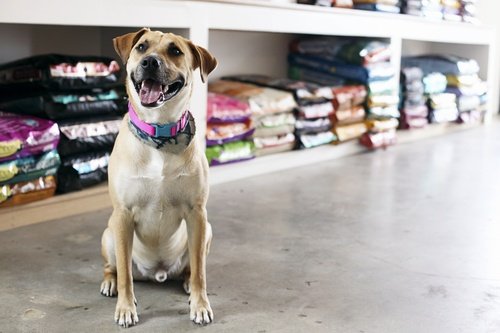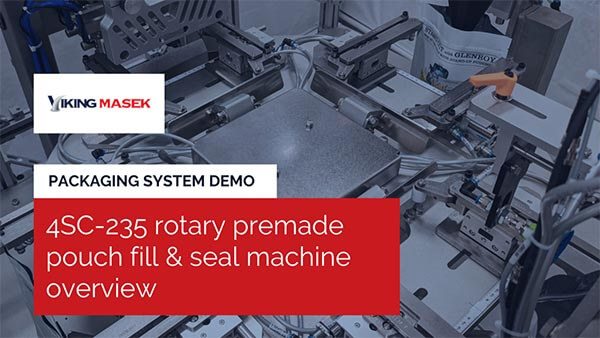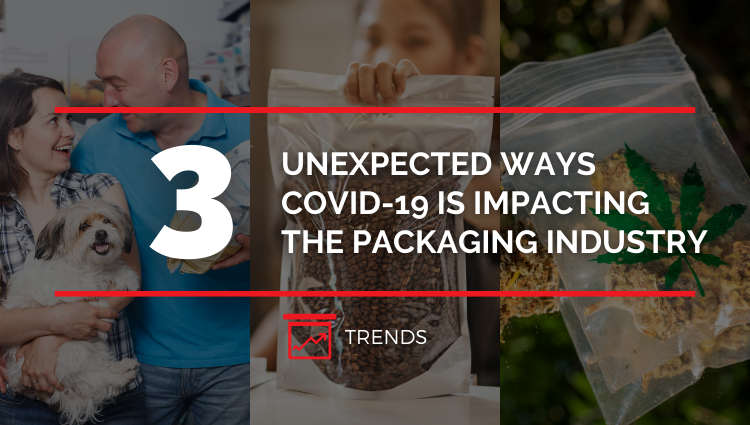Pet food packaging trends: An appeal to all five senses

The pet food industry has grown beyond anyone's imagination.
Who would have thought even ten years ago that our pets would have meal options that include choice cuts of protein, gravies and meal enhancers, and freeze-dried ingredients? The modern pet food market is truly a product of sweeping industry trends toward humanization of our furry friends and premiumization of their food and treats.
As pets increasingly become integral parts of our families, we regard them as individuals with distinct preferences and personalities. It only follows that today's pet food and treat packaging indulge and appeal to all five senses, both for pets and their parents.
1. SIGHT: Hi-def graphics and stand-up pouches
This is usually the first of the five senses that interacts with a product, whether we are conscious of it or not. As shelves in the pet food and treats aisle become increasingly crowded, brands are innovating with unique package colors and premium imaging that will set them apart and capture a hurried, distracted consumer's attention.
Major brands are redesigning their pet food packaging with the following visual enhancements:
- A departure from 'cartoony' package art to HD, realistic images of pets
- Black backgrounds to convey a premium product
- A focus on engaging fonts and popular 'human food' phrases (gluten-free, natural, holistic, etc.)
- Transparency, both in pet food packaging (clear windows to view product) and in ingredients (clear labeling and nutritional information)
Additionally, pet food producers are designing their packages to stand out from crowd, deviating away from the typical flat, pillow-type bag and instead choosing stand-up pouches (both quad bags and Doypacks). Four-sided, flat-bottom quad bags and novel Doypacks have one main thing in common: They stand upright on shelves on their own. No need for pegs or cardboard displays...these package types act as their own billboard, shouting that the product inside is premium and well-worth the extra cost.
2. TOUCH: Matte finishes and max convenience
Everyone remembers the large bulk bags of kibble that dominated pet food past. They were usually comprised of multi-walled paper packaging and not especially remarkable (if not unpleasant) to touch.
Today, pet food and treat producers are experimenting with different tactile experiences like satin soft-touch and matte pet food packaging. Especially popular are matte packaging variants like registered matte finish, meaning only portions of the package are matte to direct consumer attention and create tactile contrasts.
To appeal to [a younger] consumer demographic, packaging has shrunk to accommodate their willingness to try new products with smaller package sizes that don't require a commitment.
The general weight and portability of pet food packages have changed as well. Younger consumers are generally less brand-loyal. Being the fastest-growing group of pet owners, they do not often purchase a single brand of pet products in bulk as their parents may have. To appeal to this consumer demographic, packaging has shrunk to accommodate their willingness to try new products with smaller package sizes that don't require a commitment.
Being busy young urbanite professionals, younger consumers also don't fancy lugging a large bag of pet food onto public transportation and up to their twentieth-floor apartment. Another reason why smaller, portable, convenient packaging is winning in this consumer segment.
3. SOUND: Less is more
Revisiting the memory of the large paper bags of kibble: Crinkly paper packaging along with the rough sound of dry pet food being dispensed conveyed feelings of dryness and budget-pricing. Today's specialty and gourmet pet foods are looking to convey a very different message of freshness, premium and gourmet formulas, and nutritionally sound ingredients.
Properly conveying this message via pet food packaging requires softer, more subdued package sounds. Innovative choices in flexible pet food packaging today can do just that using anti-crinkle and rustle-free materials.
4. TASTE: Modified atmosphere packaging technologies extend freshness
Some of today's specialty and gourmet pet food companies brag that their products are good enough for humans to eat! While we are certainly not encouraging that, this point reflects the humanization and premiumization trends that are driving the pet food industry.
Use of whole ingredients like chicken breast, prime cuts of meat, and fresh vegetables appeals both to the consumer and, according to pet food companies, the pet via their evolutionary drive for raw, fresh, wild food sources.
Using a combination of barrier packaging films, oxygen scavenger packets, and nitrogen gash flush, pet food producers can extend the shelf life of their products by weeks, even months.
Fresh, perishable ingredients need special packaging technologies that ensure the products remain fresh on their journey to Fido's food bowl. Modified atmosphere packaging (MAP) technologies do just that: Using a combination of barrier packaging films, oxygen scavenger packets, and nitrogen gash flush, pet food producers can extend the shelf life of their products by weeks, even months!
5. SMELL: Satisfying scents for people and pets
Today's pet food and treat companies are looking to humanize the smell of their food to be more pleasing to pet owners. With product formulas focusing on whole, fresh foods, the scent of pet food has become less pungent and more appealing to humans without losing its innate appeal to animals.
Sharing mealtimes with a pet has become an important part of the day. A survey by Wakefield Research reports that "more than half of millennial pet owners considered it important to share meal times with pets." In the past, the human sensory component of feeding pets was not much valued, but in the modern world, consumer preferences and personalities influence their choices in food and treats for their furry friends.
Challenges arise when considering the advanced sense of smell of most pets. So as to not overpower or influence the more subtle scents of modern pet foods, packaging films must be specially chosen that are low-odor.
Create a premium experience with pet food packaging equipment
Pet foods and treats are no longer something consumers buy on price point and brand loyalty alone. For modern pet food producers, differentiating from the competition is paramount. Appeal to all five senses...explore automated pet food packaging machines.
Here's how packaging machinery can support modern demands for premium pet food experience:
- Quickly and easily create single-use packs to support a sampling program
- Scale up a small operation to meet increased demand
- Increase throughput without sacrificing a small-batch, premium look
- Redirect packaging labor resources to value-added activities like R&D and consumer research
New to pet food packaging machines? We're here to help.
Learn how pet food packaging machines work, if automation is right for you, how to choose the right equipment manufacturer, and so much more! Download our free First-time Buyer's guide:





